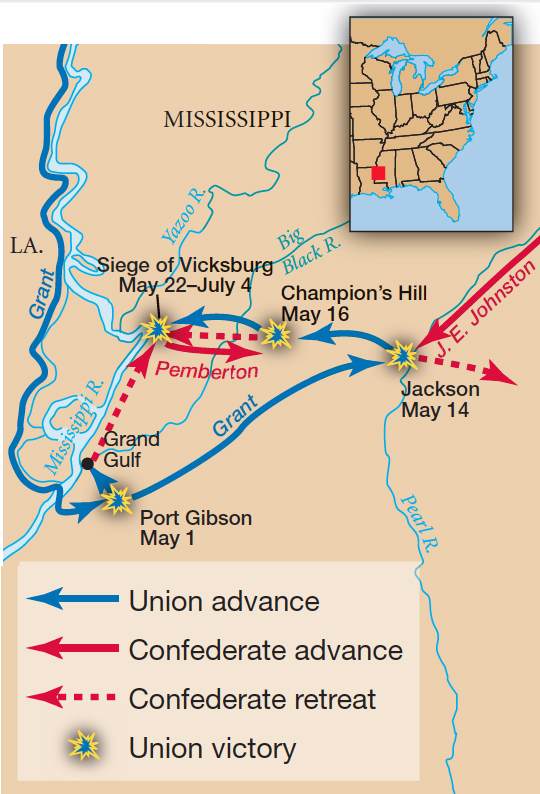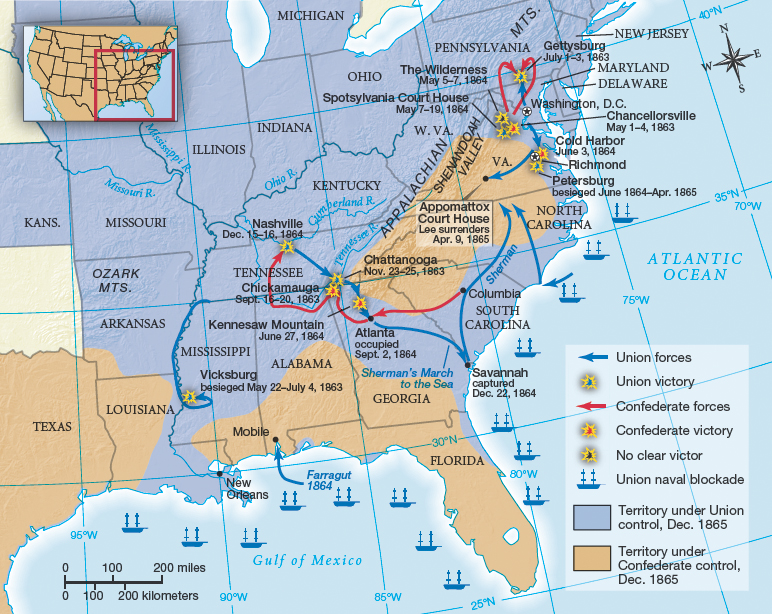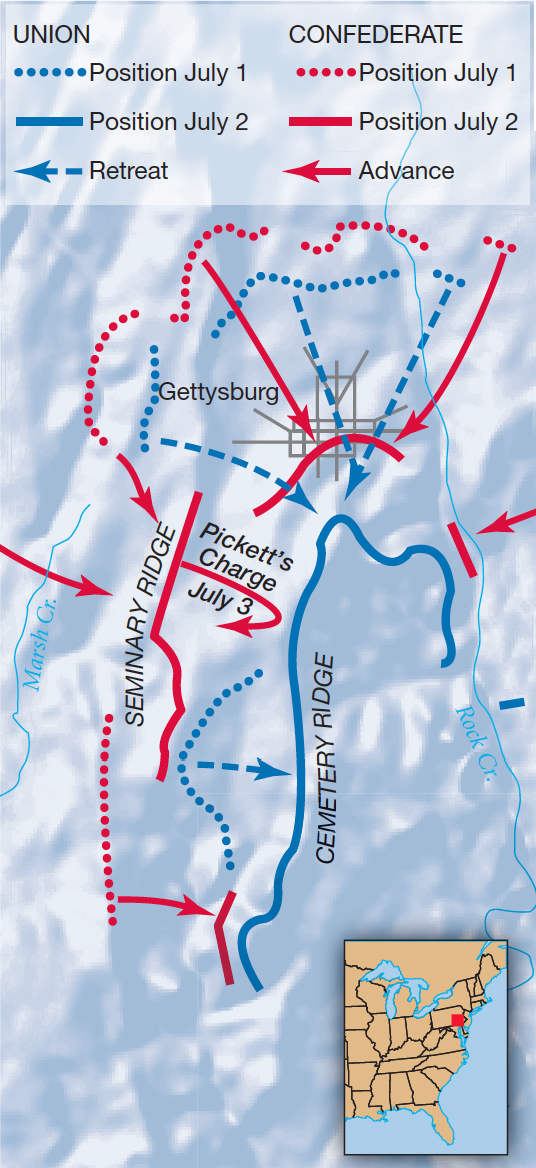Vicksburg and Gettysburg.

Printed Page 411 Chapter Chronology
Vicksburg and Gettysburg. Vicksburg, Mississippi, situated on the eastern bank of the Mississippi River, stood between Union forces and complete control of the river. In May 1863, Union forces under Grant laid siege to the city in an effort to starve out the enemy. As the siege of Vicksburg dragged on, civilians ate mules and rats to survive. After six weeks, on July 4, 1863, nearly 30,000 rebels marched out of Vicksburg, stacked their arms, and surrendered unconditionally. A Yankee captain wrote home to his wife: "The backbone of the Rebellion is this day broken. The Confederacy is divided. ...Vicksburg is ours. The Mississippi River is opened, and Gen. Grant is to be our next President."
siege of Vicksburg
Six-week siege by General Grant intended to starve out Vicksburg. On July 4, 1863, the 30,000 Confederate troops holding the city surrendered. The victory gave the Union control of the Mississippi River and, together with Gettysburg, marked a major turning point of the war.
On the same Fourth of July, word arrived that Union forces had crushed General Lee at Gettysburg, Pennsylvania (Map 15.3). Emboldened by his victory at Chancellorsville in May, Lee and his 75,000-man army had invaded Pennsylvania. On June 28, Union forces under General George G. Meade intercepted the Confederates at the small town of Gettysburg, where Union soldiers occupied the high ground. In three days of furious fighting, the Confederates failed to dislodge the Federals. The battle of Gettysburg cost Lee more than one-third of his army — 28,000 casualties. "It's all my fault," he lamented. On the night of July 4, 1863, he marched his battered army back to Virginia.
Map Activity 2 for Chapter 15

battle of Gettysburg
Battle fought at Gettysburg, Pennsylvania (July 1–3, 1863), between Union forces under General Meade and Confederate forces under General Lee. The Union emerged victorious, and Lee lost more than one-third of his men. Together with Vicksburg, Gettysburg marked a major turning point in the war.

The twin disasters at Vicksburg and Gettysburg proved to be the turning point of the war. The Confederacy could not replace the nearly 60,000 soldiers who were captured, wounded, or killed. It is hindsight, however, that permits us to see the pair of battles as decisive. At the time, the Confederacy still controlled the heartland of the South, and Lee still had a vicious sting. War-weariness threatened to erode the North's will to win before Union armies could destroy the Confederacy's ability to go on.